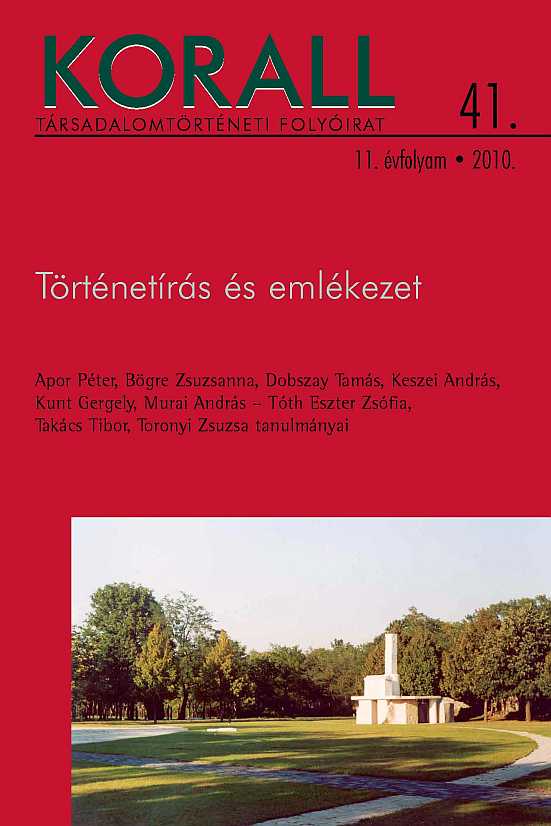Hogyan képzeljük el? A holokauszt emlékezete és a helyszín rekonstrukciója dokumentumfilmekben
How do we imagine it? Remembering the Holocaust and the Reconstructing its Sites in Documentaries
Author(s): András Murai, Eszter Zsófia TóthSubject(s): History
Published by: KORALL Társadalomtörténeti Egyesület
Summary/Abstract: The premise of this present study is the idea that documentaries attempting to reconstruct the ‘original settings’ significantly influence our understanding of the Holocaust, by way of creating secondary memory. How do we imagine the ghettos and the lagers? Where do we place the series of humiliations and destruction? And what are the methods of documentary films as the means of collective memory? What narrative and visual solutions are deployed to reconstruct the past? These questions are important not only because they are connected to one of the cornerstones of Holocaust discourse, the paradox of the necessity and impossibility of representation, but also because the spatial imaging of past events is indispensable both for our personal and collective memory. Analysing Hungarian documentaries along with Lanzmann’s 1985 Shoah, a milestone in Holocaust representation on film, the study highlights four different techniques for the reconstruction of Holocaust sites: returning to the site, the absence of traces of the past, reconstructing the place from narratives, and the use of archive footage. Place, both in the sense of revisiting it, and being confronted with or finding no traces of the past at the original site, is shown to have an exceptionally important role in the films discussed in the study, some of which were made during the socialist era when this subject was taboo. The road leading to the original site and the passing of time gained symbolic power in these documentaries. The most vivid images were achieved by showing the lack of people and the loss of original sites, by the visual representation of absence.
Journal: Korall - Társadalomtörténeti folyóirat
- Issue Year: 2010
- Issue No: 41
- Page Range: 81-96
- Page Count: 16
- Language: Hungarian

